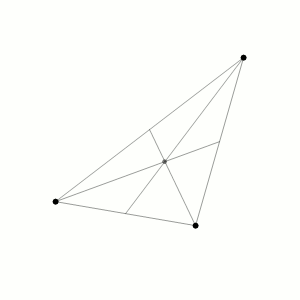Three-body problem
In physics and classical mechanics, the three-body problem is the problem of taking the initial positions and velocities (or momenta) of three point masses and solving for their subsequent motion according to Newton's laws of motion and Newton's law of universal gravitation.[1] The three-body problem is a special case of the n-body problem. Unlike two-body problems, no general closed-form solution exists,[1] as the resulting dynamical system is chaotic for most initial conditions, and numerical methods are generally required.
Historically, the first specific three-body problem to receive extended study was the one involving the Moon, Earth, and the Sun.[2] In an extended modern sense, a three-body problem is any problem in classical mechanics or quantum mechanics that models the motion of three particles.
The mathematical statement of the three-body problem can be given in terms of the Newtonian equations of motion for vector positions of three gravitationally interacting bodies with masses :
where is the gravitational constant.[3][4] This is a set of nine second-order differential equations. The problem can also be stated equivalently in the Hamiltonian formalism, in which case it is described by a set of 18 first-order differential equations, one for each component of the positions and momenta :
where is the Hamiltonian:
In this case is simply the total energy of the system, gravitational plus kinetic.









